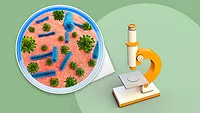University Research Finds Alternative Method for Salmonella Culturing

Traditional methods for culturing Salmonella can sometimes take a minimum of four to five days. However, a University of Georgia researcher has found a potential alternative method for Salmonella culturing that may reduce the isolation time required for this process.
USPOULTRY and the USPOULTRY Foundation funded the research. Experiments found that CRISPR-SeroSeq can offer a new framework for monitoring Salmonella populations during processing.
The goals of the project were to improve Salmonella surveillance and to trace Salmonella serotypes through a commercial processing plant. The project aimed to improve surveillance by addressing the limitations of traditional culturing methods, which select a small number of colonies, and are also time-consuming. This is a limitation because only abundant serotypes are detected, whereas smaller colonies may be under-identified. Salmonella has more than 2,600 serotypes, with only a small amount relating to human illnesses.
The principal investigator, Nikki W. Shariat, Ph.D., assistant professor, University of Georgia College of Veterinary Medicine, traced serotypes of Salmonella at a commercial poultry plant to determine the serotype profiles after each major processing step. She did this by taking samples of carcasses, at both pre- and post-chill, and parts.
Shariat's research showed that “…partially increasing the selectivity of the non-selective pre-enrichment culture step was sufficient to recover Salmonella 24 hours earlier than is the current standard using selective enrichments,” according to the report. “This approach yielded similar Salmonella prevalence compared to the traditional two-step culture approach.”
Shariat's second goal was to trace Salmonella serotypes through commercial processing. To achieve this, she compared pre-enriched and enriched serotype profiles from various poultry-related sources like carcasses, broiler house, litter, and feed, among others. Eighteen different visits were made to three processing facilities, and duplicate samples were collected at each visit, says the report. CRISPR-SeroSeq was able to detect small amounts of a Salmonella serotype in mixed-culture samples.
Related: Study: Food Animals Contain More Antimicrobial-Resistant Salmonella Than Previously Thought
Looking for quick answers on food safety topics?
Try Ask FSM, our new smart AI search tool.
Ask FSM →









